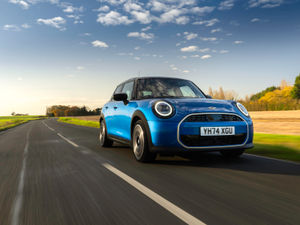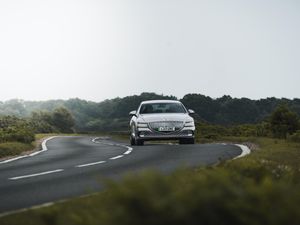This hot hatch is one for the future
Since cars are a rapidly depreciating yet essential asset, owning one that isn't just utilitarian transport but actually puts a smile on your face is a big plus.
And there are miles of smiles to be had with Peugeot's latest hot hatch, the 308GTi.
It isn't just the blistering performance or the excellent dynamic handling, it's a recognition that the engineers have gone back to the future with some technical trickery that doesn't even involve a flux capacitor.
It's powered by a 'mere' 1,600cc engine just like the lowest powered version of its iconic 205Gti which ruled the hot hatch scene 30 years ago.
Don't be fooled. The 205 produced 104bhp (later models had a bit more) which was enough for thrilling performance in a lightweight car. But today's turbocharged power plant in the 308GTi is capable of turning out a staggering 250 or 270bhp (there are two versions) making it the most powerful engine of its size in any production car.
And true to its heritage, the car hasn't been on a diet of cake and chocolate either. It's still a lightweight, with a little over 9lbs (4.46kg) of weight for every horse.
Not only does the Peugeot have an edge over many two-litre cars in the current line-up of hot hatch competitors in terms of outright power, the power/weight combination means better acceleration and dynamic handling as well as lower fuel use and emissions. At least when neither car nor driver is in sport mode, anyway – a steady 70mph motorway run would see you averaging well into the 40s in mpg terms.
The 308GTi was engineered by Peugeot Sport, the French company's specialists responsible for its success in many fields of motor sport over the years, So the exceptionally powerful 1.6 litre unit isn't just a result of turning up the wick on the turbo (although they have), the lower part of the engine has been strengthened and uses special low friction components.
The suspension was designed specifically for the GTi, which sits 11mm lower, and the more focussed 270bhp version has a torsen (torque sensing) differential for enhanced cornering ability and huge, fade resistant brakes which would give a race driver confidence.
The performance figures are pure GTi: 0 to 62mph takes six seconds in the 270 (6.2 for the 250), but for real world driving the crucial overtaking zone of 50 to 75mph is equally impressive – just 5.7 seconds for either car.
Then take a look at the economy figures of 47mpg and 132g/km for such a quick car and you see the advantages of a smaller capacity, turbocharged engine and light weight – and more best in class figures for Peugeot.
Both versions have a 'sport' button which sharpens throttle response and alters the tune from the twin big bore exhausts to an even deeper growl.
The prices are £26,555 for the 250 version, and £28,155 for the 270. The £1,600 differential seems almost strangely small but it does ensure that even the more focussed model is still highly competitive. For that money the addition of race-bred brakes, torsen diff, bigger alloys, lower profile tyres and body hugging Peugeot Sport bucket seats seem like a bargain.
If you're in the market for a car in this class. it's a tough decision. The 250bhp car would give most all they want in terms of performance and superb dynamic handling, and the advantages endowed by the extra kit on the flagship car are more likely to be appreciated on a test track than on public roads.
The torsen differential, for example,instantly transfers more power to the front wheel with most grip so that you can put down more power, and earlier, through a corner. Near the limit it actually feels like you're being pulled around, and on a tighter line. But then on the road, both cars have already had their front suspension geometry altered to resist understeer, while that at the rear is stiffer to limit body roll and ensure maximum grip.
The 250 may not get the full-on bucket seats, but its own sports seats will still hold you firmly but comfortably through the twisty bits. The sports suspension on both is, of course, firm and feels it on some of our B-roads, but in dynamic terms it handles such surfaces well without being bounced off track or scrabbling for grip.
Both models are also well-equipped as befits a flagship of the 308 range with climate control, a 9/7 inch colour touch screen controlling satnav, audio and communications systems plus reversing camera, tinted windows, cruise control/speed limiter, front and rear parking sensors and power folding mirrors.
There are the expected GTi touches,of course, such as aluminium style pedals, leather steering wheel and specific Gti mats, as well as the sports seats,
That's on top of the standard 308 safety systems such as multiple airbags, stability programme and ABS.
There's a sense that with the 308Gti Peugeot has gone back to its illustrious past and THE hot hatch of its day, the 205. They're both 1600s (albeit today's car has two and a half times the power), both very competitively priced, both lightweight, and both have excellent dynamics.
But the 308 is also very much a GTi for the future because it offers so much more performance for less fuel and CO2. You're getting a full-size hatchback with lots of oomph and smile potential with running costs on a par with many a much less inspiring family saloon – except perhaps for a GTi insurance rating. But then that's life!
By John Griffiths





